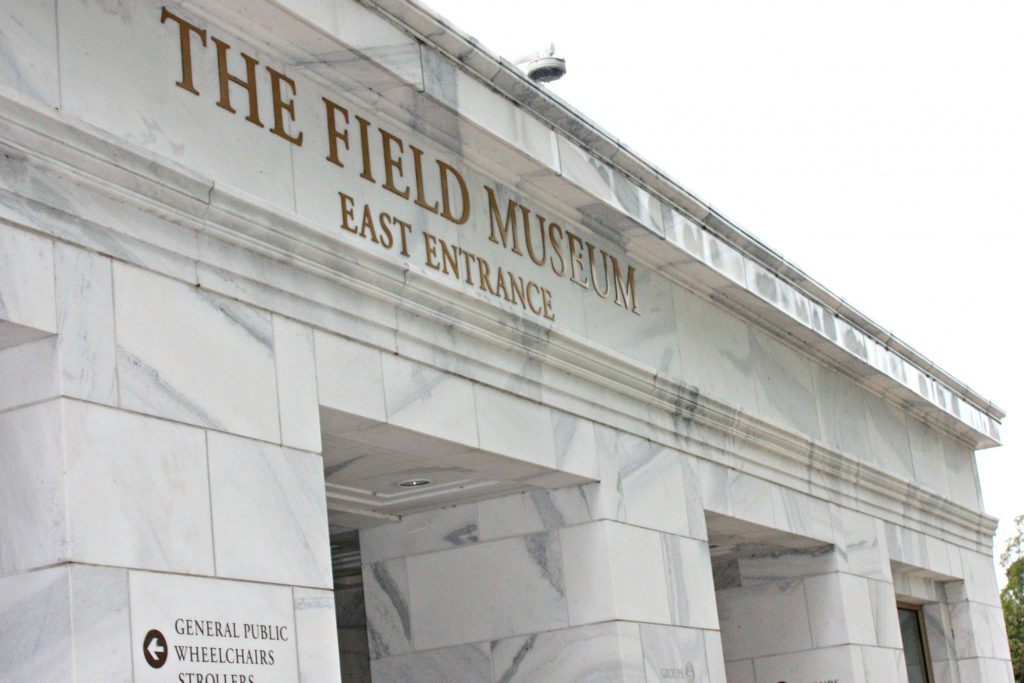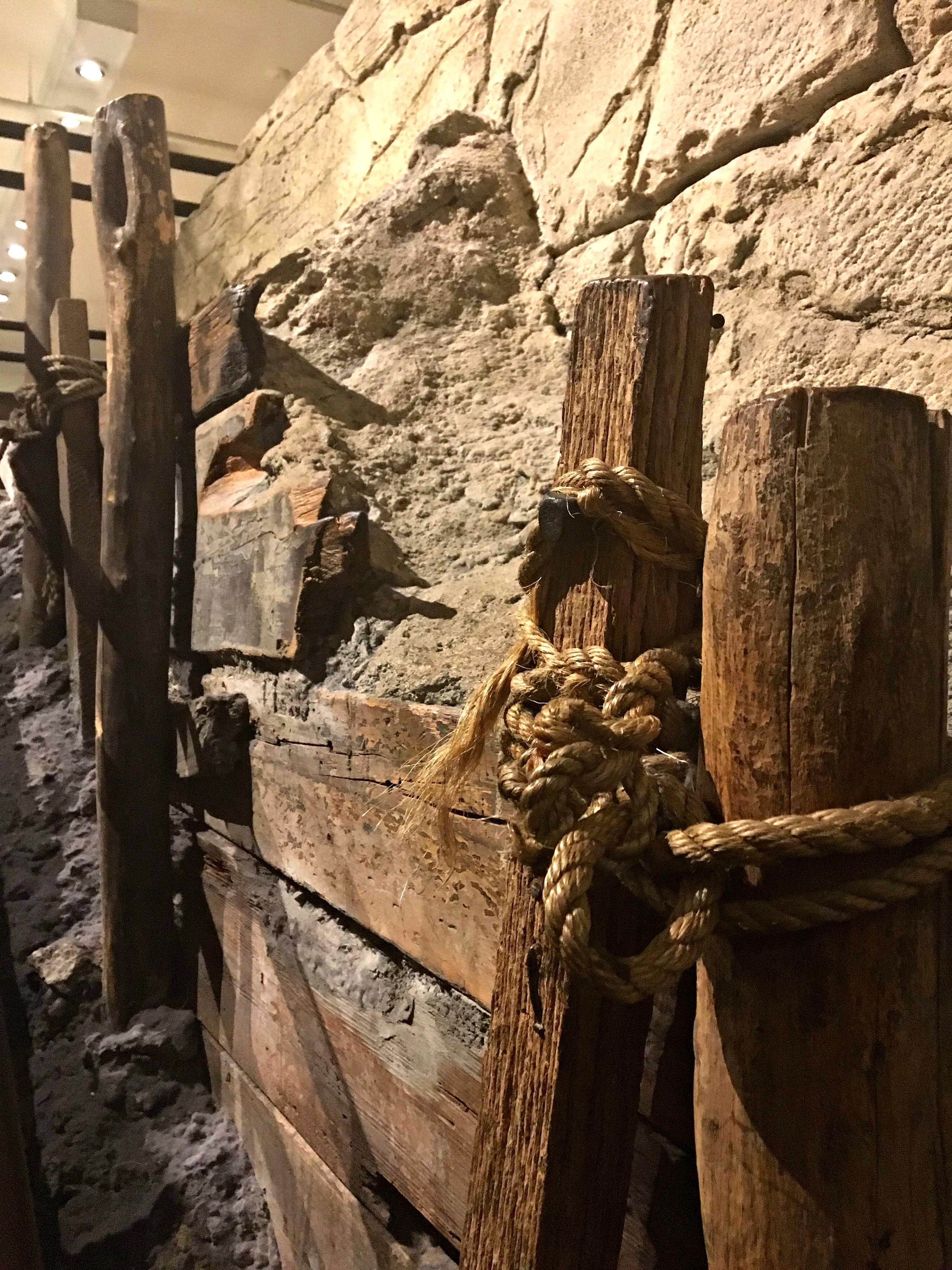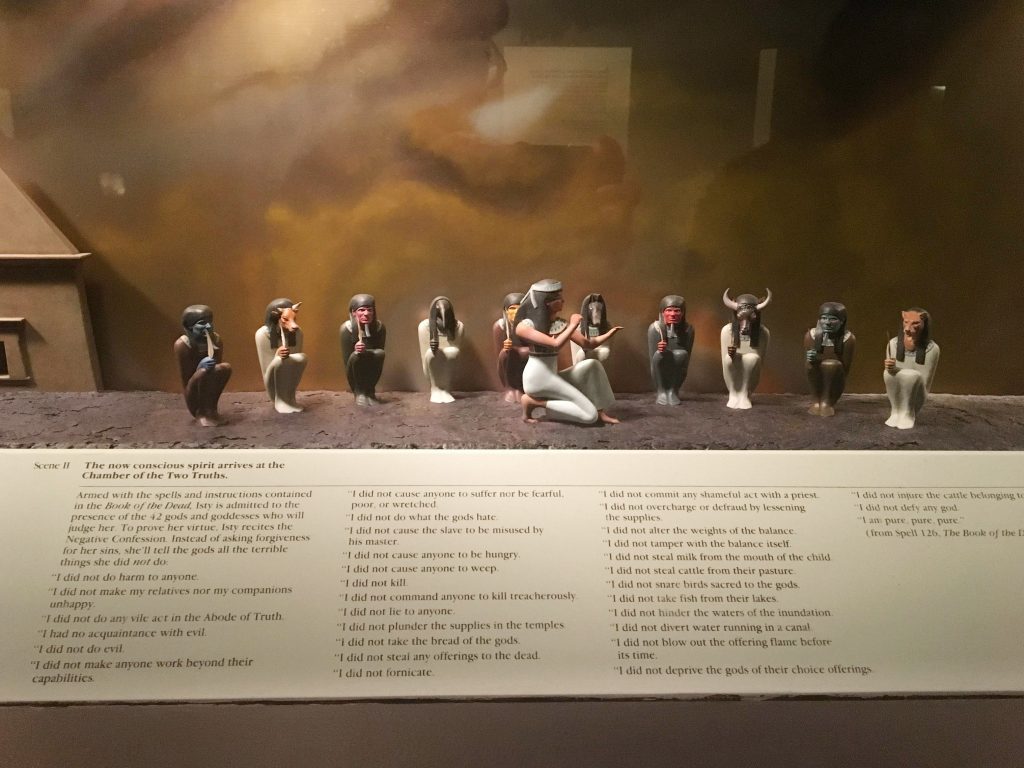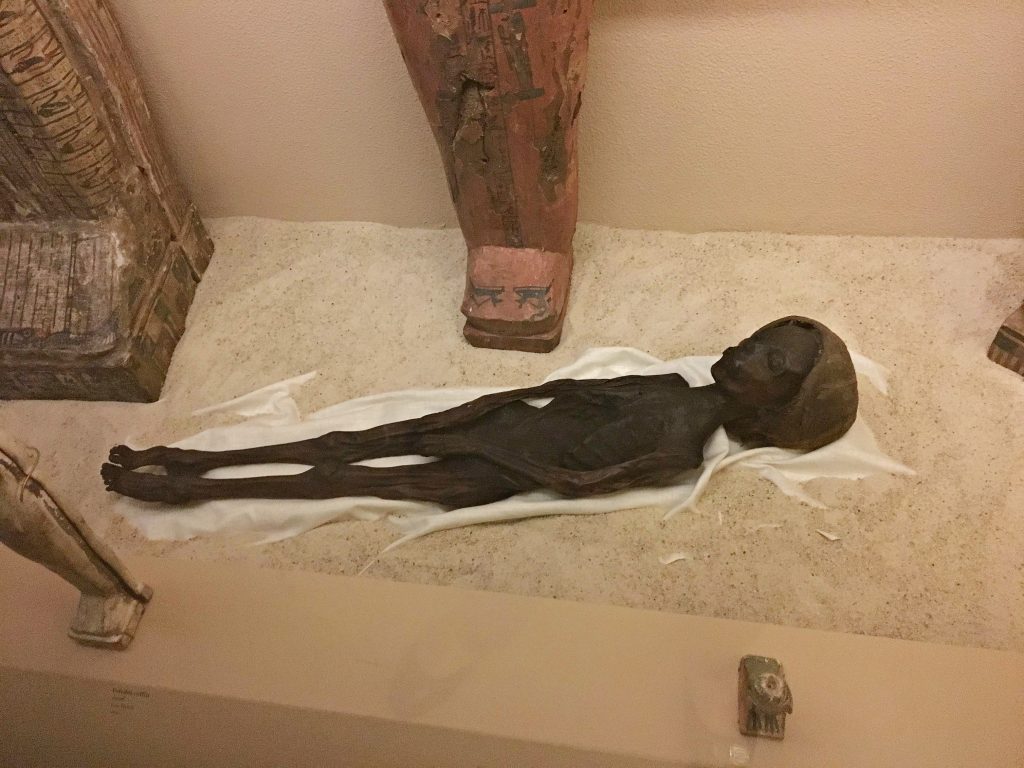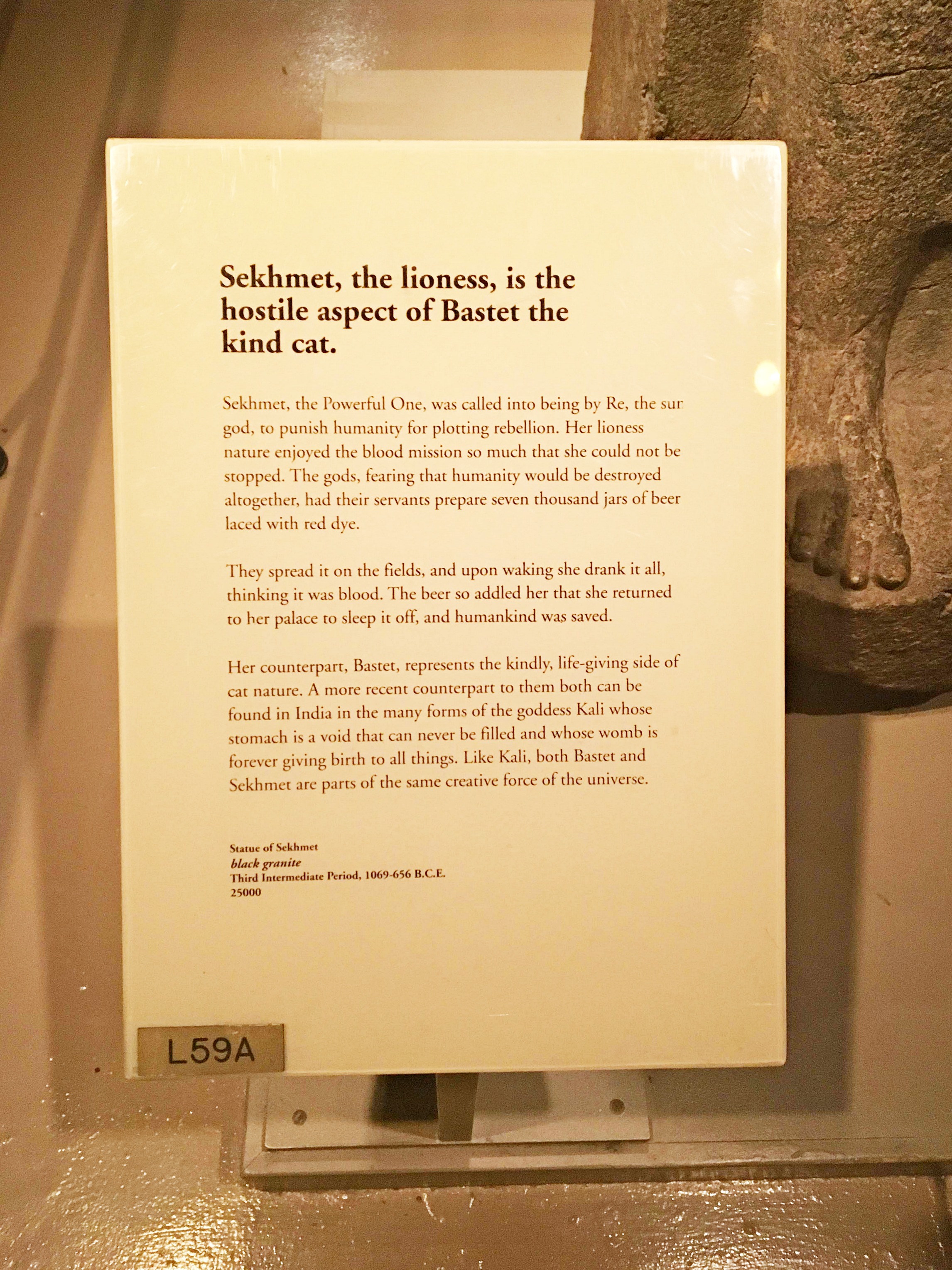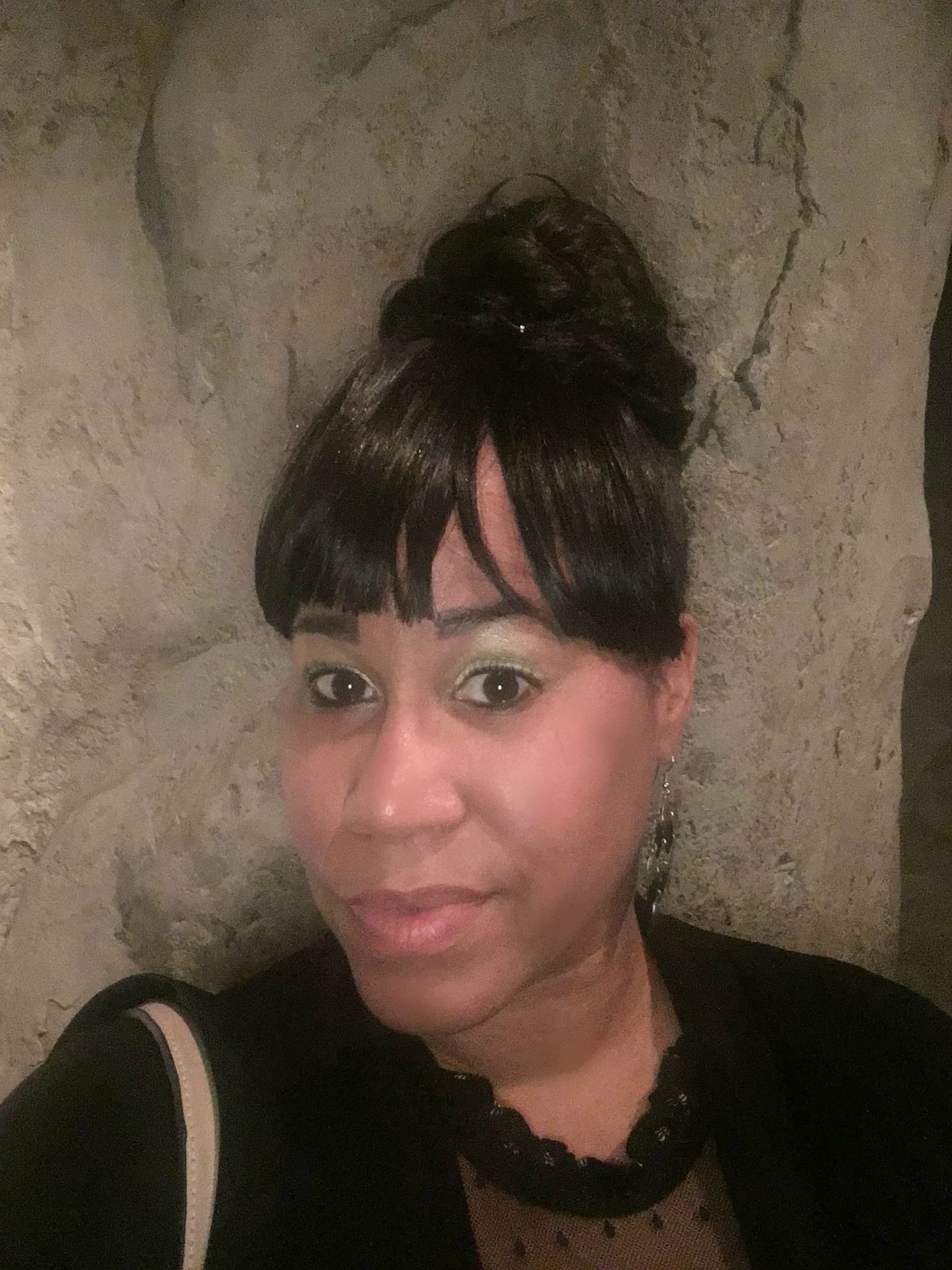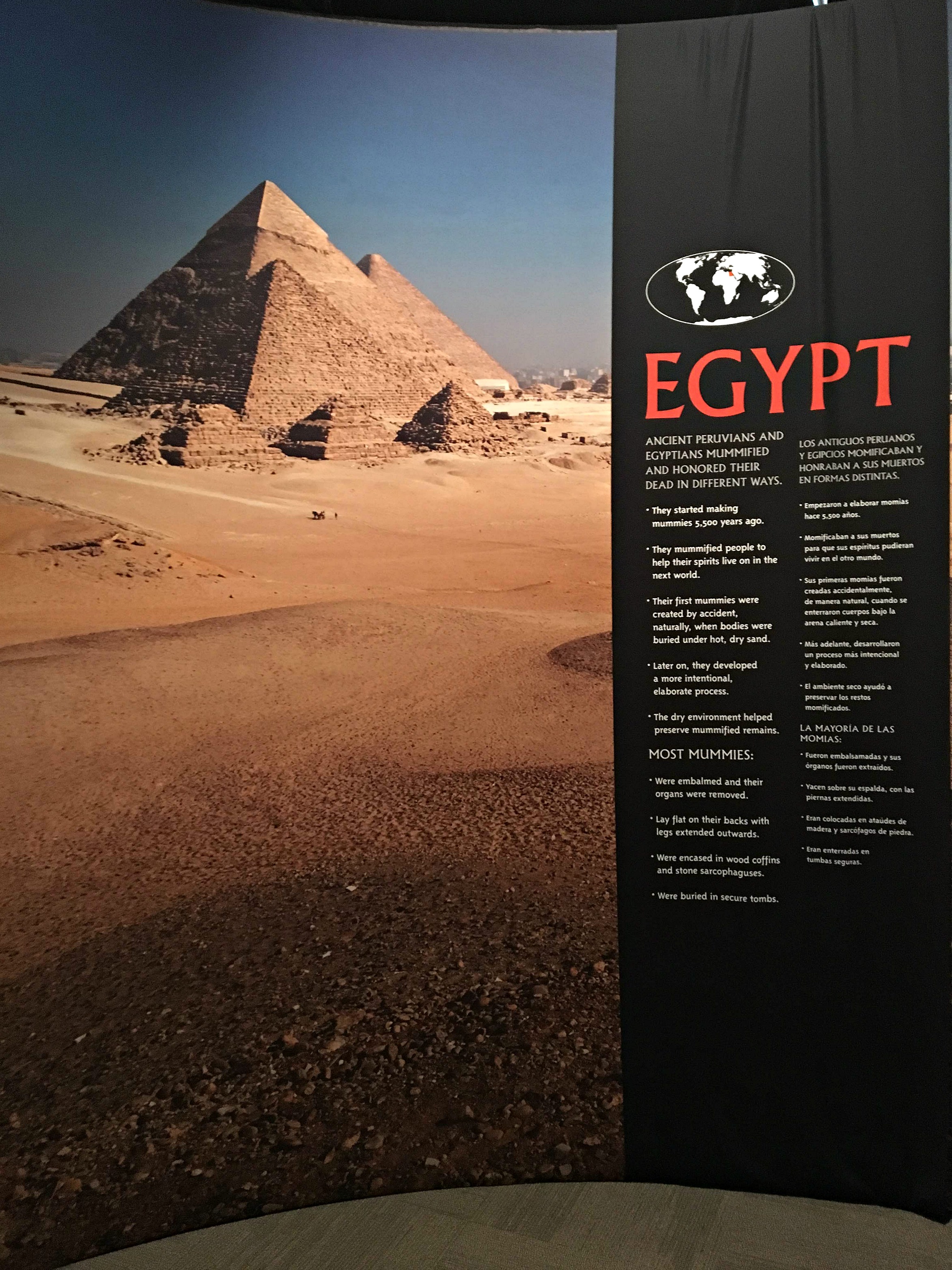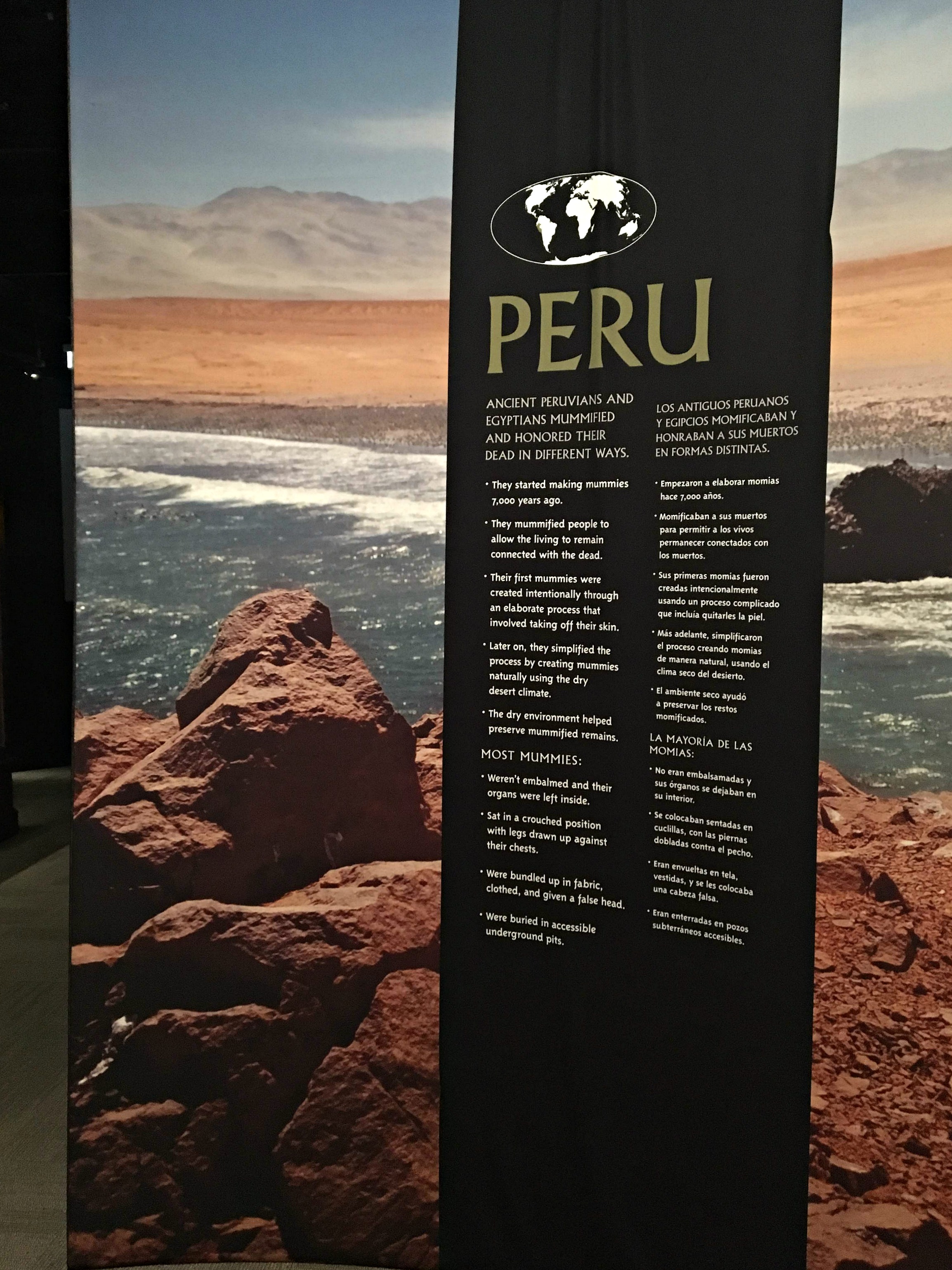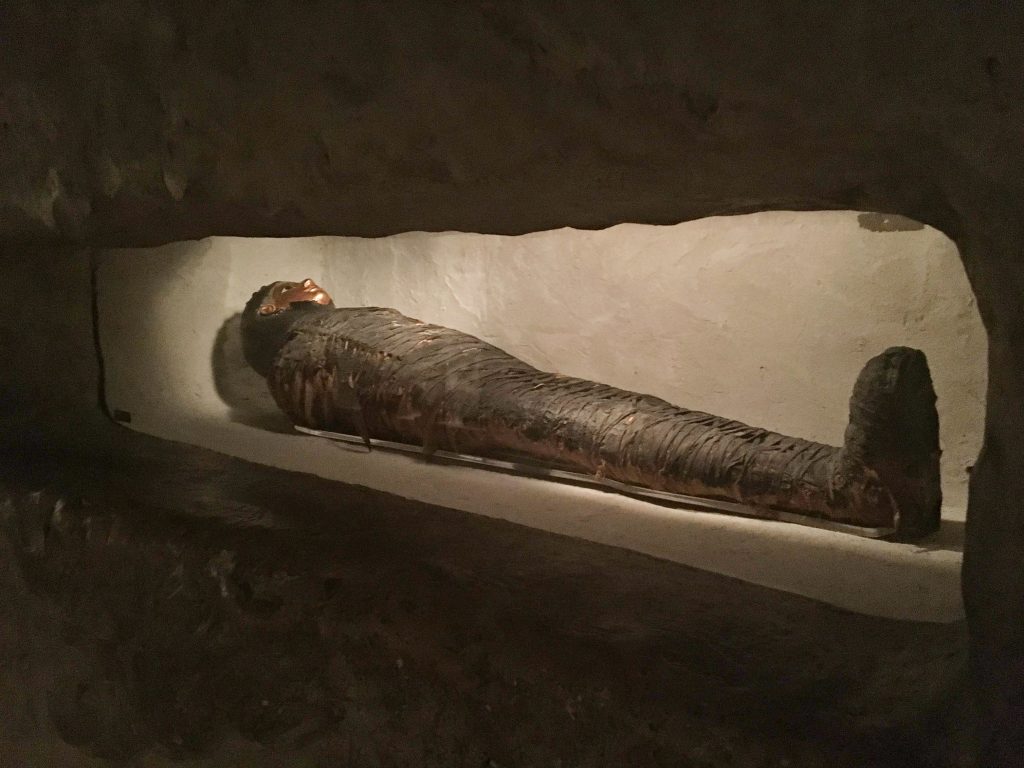No, I didn’t physically go to Ancient Egypt or Peru (yet). However, I did make my way to the Field Museum of Natural History in Chicago which my goal being to connect the dots from the book I’ve been reading, Tales of Ancient Egypt to the actual exhibit.
In addition, I wanted to expand upon what I learned from the King Tut Exhibit in Kansas City a few years ago.
And, that’s just what I did.
Warning: This post contains graphic images and affiliate links to products mentioned.
The Field Museum
The Field Museum of Natural History, also known as The Field Museum, is a natural history museum in the city of Chicago, Illinois and is one of the largest such museums in the world. It is located at 1400 S. Lake Shore Drive.
Inside Ancient Egypt
The Inside Ancient Egypt exhibit is an interesting look into ancient Egyptians, their daily lives, and their feelings about death.
Our tour started with a brief overview of the location of Egypt and what the land was known for, such as growing crops of barley. After learning basic facts about the land, we actually entered a three-story replica of a mastaba. We learned that a mastaba is a variation of an ancient Egyptian tomb.
This tomb was from the the burial site of 5th Dynasty Egyptian Pharaoh Unis’s son Unis-Ankh. This particular replica or chamber houses one of the largest collections of mummies in the United States. It is said to contain mummies of both humans and animals including 23 human mummies and over 30 animal mummies.
As we toured the space, we learned about the mummification process and more about the way Egyptians thought about death. Although, the mummies were quite graphic, there were beautiful dioramas with interesting tales to help you visualize life in Ancient Egypt.
Mummification Process
Mummification was a process of 70 days that was done to preserve the dead body for the afterlife. Egyptians believed that the soul lived within the body even after death. Therefore, preserving the body would allow the spirit to remain in tact for the next life – as they entered the Land of the Dead.
As we exited the exhibit, we entered the Memphis Marketplace and learned about how the ancient marketplaces were run.
Interesting Perspectives
A lot of what I read, experienced, and learned were similar in nature. However, there are a few differences in what is stated in the book compared what is shown in the exhibit.
Therefore, it’s definitely worth a little further research.
Mummies, Continued
To continue learning about the mummification process and other interesting facts, we headed into the exhibit, Mummies. Just so you know. Mummies is a limited-time exhibition at the Field Museum. This exhibit focused more on the mummification process in both, Egypt and Peru.
The process of mummification was not only done to humans, but to animals as well. This exhibit includes 14 mummies including both adults and children in very lavishly decorated coffins.
Some of the Peruvian mummy bundles included a more than one person; for example a child and mother.
This exhibit presents an interesting way to learn similarities and differences in the mummification process between the ancient Peruvian and Egyptian cultures.
Final Thoughts on Ancient Egypt and Mummies
There is no way I could actually tell you everything about these two exhibits, but I am so glad I was able to experience them. So, if you have a fascination with Ancient Egypt, I would definitely recommend a visit to the Field Museum to check out both exhibits, Inside Ancient Egypt and Mummies.


